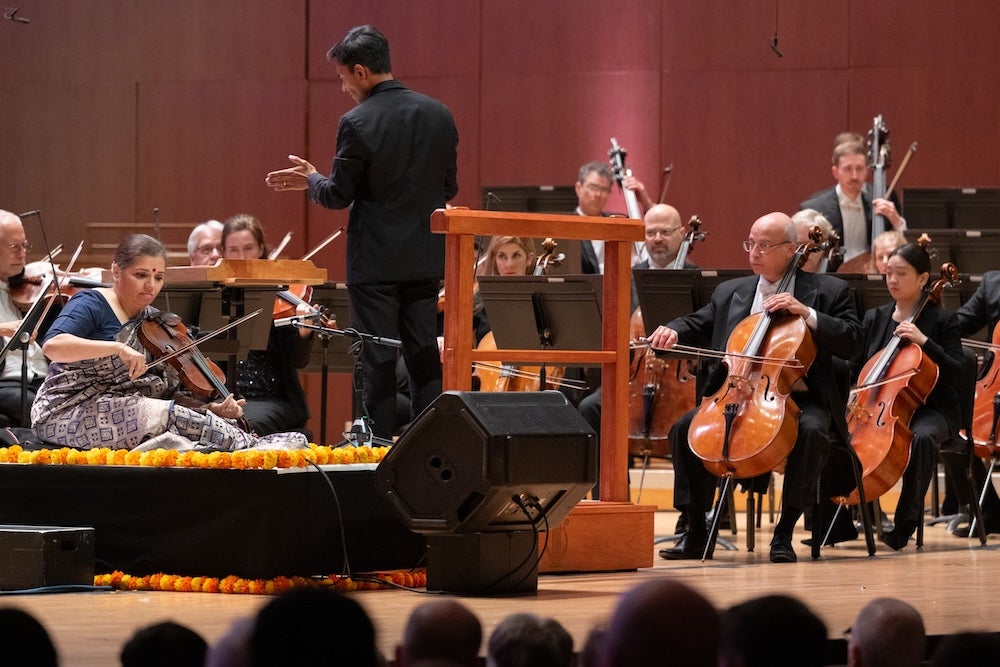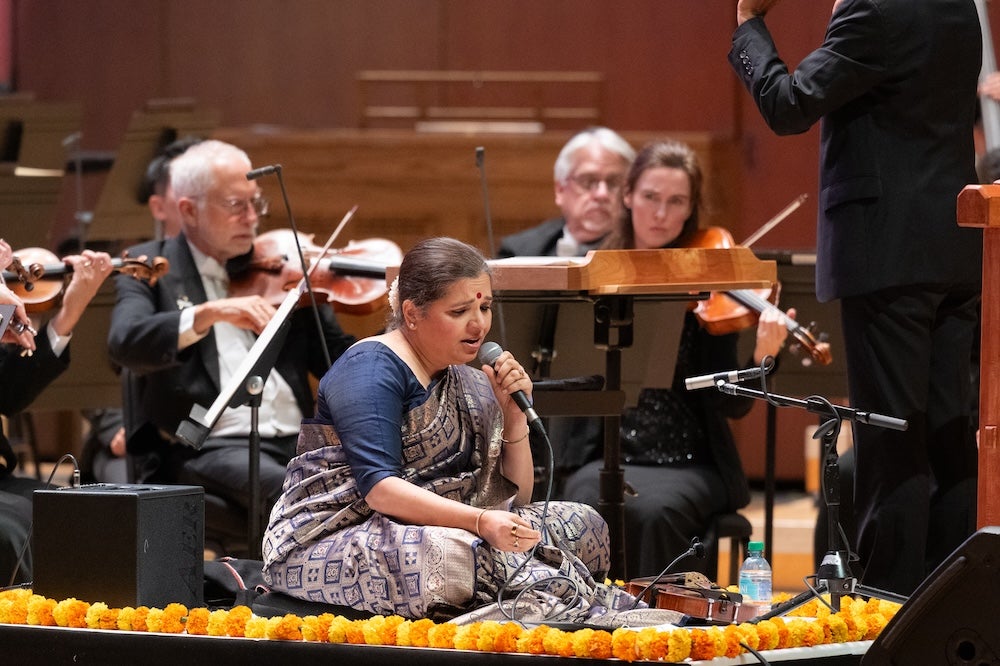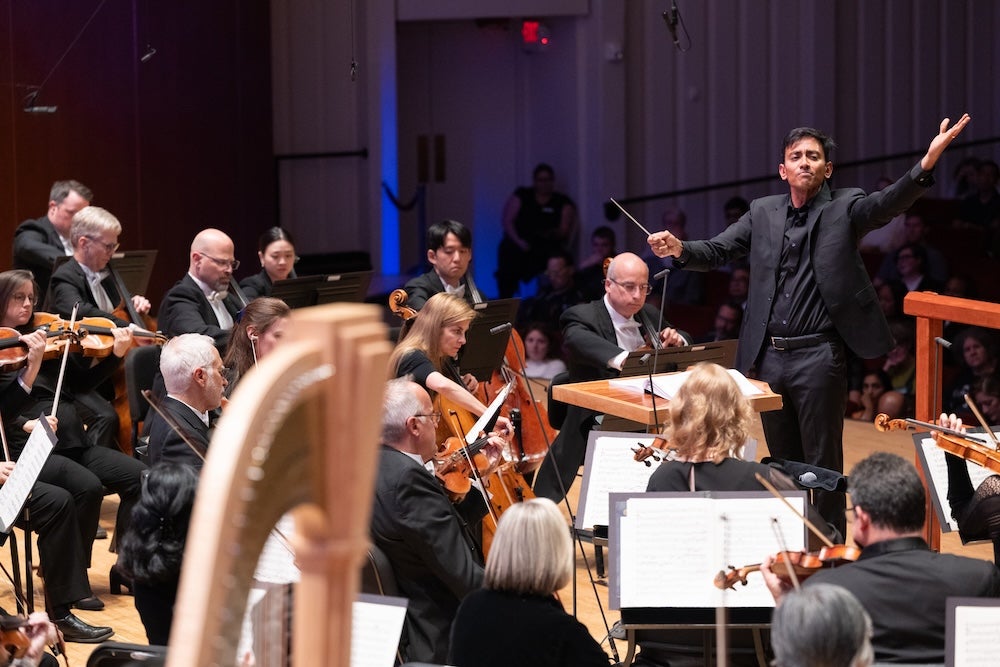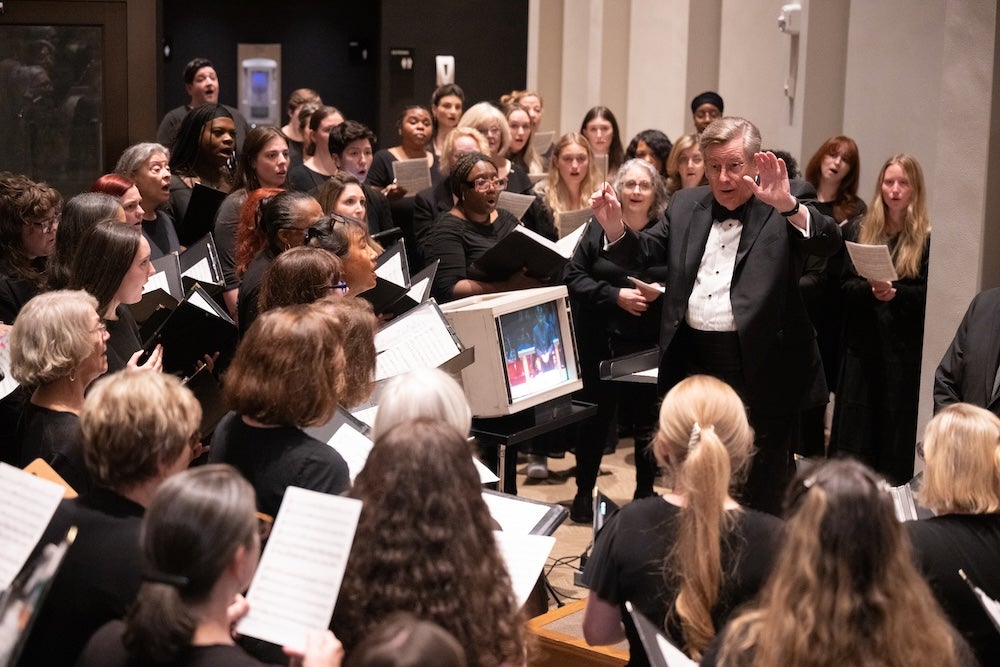ASO explores musical diversity with ‘Visions of India’
Concert Reflections with Jon Ross
In this series from local music journalist Jon Ross, he reflects on the ASO’s Delta Classics Series with fresh insights into each concert.

Photos by Rand Lines
OCT 24 |The first note from Kala Ramnath’s violin, a guttural, primal sound that was somehow joyful and full of sorrow at the same time, made me hold my breath. Or maybe it took my breath away. All I remember is that when she began playing “Concerto for Hindustani Violin and Orchestra,” I suddenly had to remind myself to breathe.
On Thursday, Ramnath, one of the giants of Hindustani music, joined the Atlanta Symphony Orchestra and guest conductor Vinay Parameswaran for a celebration of Hindustani music. The cerebral “Lumina” by Nina Shekhar opened the program, followed by the concerto, which Ramnath developed in collaboration with Reena Esmail. The concert repeats Saturday at 8 p.m.

The orchestra’s exploration of Indian classical music will hopefully turn into an ongoing tradition. Two years ago, sarod player Amjad Ali Khan arrived in Atlanta with his concerto “Samaagam,” and I wrote at the time that the orchestral musicians sometimes struggled with expanding their playing into a new context. Thursday night, the musicians seemed more in step with Ramnath, though at times, the guest artist and orchestra also found themselves out of sync. Whatever the occasional musical missteps, this experiment is clearly worth continuing.
“Concerto for Hindustani Violin and Orchestra” is rooted in nature; five of the six movements are named for the elements, striving to address space, air, fire, water and earth through the lens of climate change. On Thursday, the concerto opened with the ASO’s careful focus on creating space – sparse, hushed orchestration added a bit of mystery to the first movement programmatic work. The final movement, during which Ramnath sets down her violin and picks up a microphone to sing, is a prayer of forgiveness for how humans have treated the planet’s natural resources. Thursday, her singing, full of liquid notes that flowed into one another, mirrored her lithe violin technique.
Opening the program, “Lumina” began with a very slow, deliberate awakening, led by violins that delicately explored silence. Shekhar speaks of her 11-minute piece as a contrast between light and dark, where sonic clouds jut up against bright, sharp notes. Her introduction embraces darkness; it’s dominated by silence but soon rewards patience, with the orchestra expanding its sound into a dense cluster of microtones and dissonance. Thick, billowing clouds of sound rose and fell from the orchestra.

After intermission, to ground the audience in the familiar, Parameswaran brought a truly dazzling and inspired version of Gustav Holst’s “The Planets.” Atlanta audiences have heard that sprawling work of cinematic sound time and again – conductor Gemma New last brought “The Planets” to the ASO stage in February 2024 – but classical chestnuts are popular for a reason, after all. The ASO was in prime sound-painting mode, exploring far-off celestial worlds via heraldic brass, thundering percussion and gossamer strings. With the wrong orchestra, certain movements of “The Planets” can turn garish, but Parameswaran carefully shaped every dynamic swell and forceful orchestral blast. At its core, the composition is otherworldly, concerned with the unknown, and the enigmatic presence of the women of the ASO Chorus, singing unseen from an upper balcony at the end of the final movement, proved an exquisite closing to the familiar work.

Atlanta is a diverse city, and that diversity should be mirrored in its leading cultural institutions. When Ralph Waldo Emerson wrote that “a creative economy is the fuel of magnificence,” he probably wasn’t thinking about diversity in classical music. But the creative economy contains multitudes; it must be diverse, must include all backgrounds and upbringings, creating an inclusive community. The ASO is at its best when it probes these ideas, introducing longtime audiences to new perspectives in classical music and, at the same time, embracing new listeners attracted by innovative programming.